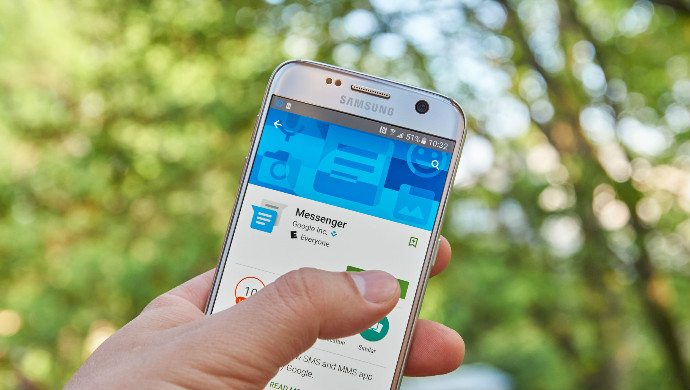The RCS system is designed to significantly upgrade the messaging services offered by traditional telcos like Telenor

What made messaging services like WhatsApp, Telegram and LINE so successful?
One major factor is that standard Android SMS messaging systems — the ones that comes pre-installed with most Telcos —are pretty horrendous.
Google is putting a lot of eggs into fixing this pain point, hoping that it’s new Rich Communication Service (RCS) will make group chat, photo sharing, read receipts and more the new standard for Android SMS messaging systems.
Today, in a blog post, Google announced it will be bringing the RCS to Asia through a partnership with Telenor (it specifically mentioned Bangladesh, India, Malaysia, Myanmar, Pakistan and Thailand).
The service will also be rolled out across Europe and, according to the post, has a potential reach of 214 million people.
For about a year now, Google has been working with global operators to bring RCS to telco operators around the world (which, as we will explain below, is Google’s largest hurdle). The Telenor deal is the third telco to sign up for RCS system (Sprint in the US and Rogers in Canada).
To call the RCS system a white-label would be wrong. Rather, Telenor subscribers need to download (or upgrade) to the latest Google Messenger app, which will then upgrade the SMS system. Many new Android devices will come with the service pre-installed as the default messaging app.
Also Read: Why we choose profit
Google says it plans to launch the RCS system with more Telcos in the coming months.
The diversity of Android problem
Google is once again running into the question that has defined the Android vs. Apple iOS debate for the decade since the birth of smartphones. Is the open Android system a feature? Or a bug?
Apple’s iMessage system is quite successful and is the go-to service for millions of people (at least in the US — in Asia it feels second-fiddle to third-party apps). Because it leverages its own iCloud system, Apple can launch iMessage across all of its phones, regardless of the telco. Techcrunch has a nice detailed explanation of how iMessage works here.
Google’s challenge is building RCS into a cross-Android messaging service that creates an environment in which people outside of Telenor — or Sprint, or Rogers, or whatever Telco signs up next — can use the system.
For example, the American telco T-mobile does not plan to integrate RCS into its service in the near future. This weakens the overall service quality and presents a problem for user integration.
Also Read: Tencent confirms WeChat will introduce paid content for official accounts
For those old enough to remember, telcos would sometimes offer free calling minutes when both parties were subscribers of the same company. While it may seem like a nice discount, it was also a burden for people, who would ask one another about their phone plans before sitting down for a two-hour late-night phone call.
Only being able to use RCS messaging between Telenor users seems to be the same problem adapted for modern technology.
Google’s RCS system seems like a well-made product, but to compete with iMessage, WhatsApp, LINE and others, it will need to either onboard a significant majority of the world’s telcos, or find an alternative distribution network.
—
Copyright: dennizn / 123RF Stock Photo
The post Google launches latest RCS messaging service across Asia via Telenor appeared first on e27.